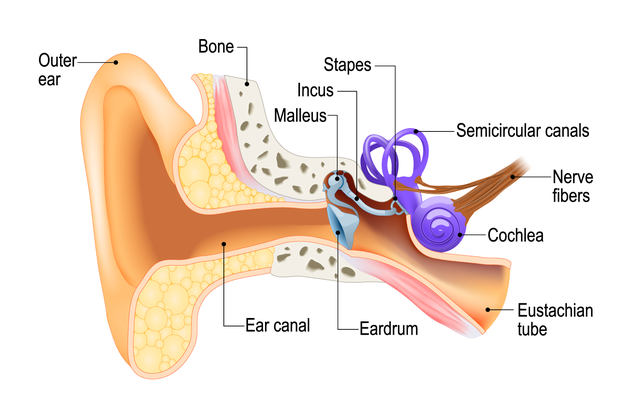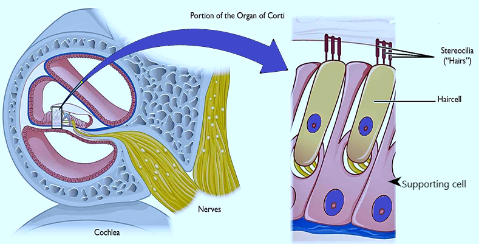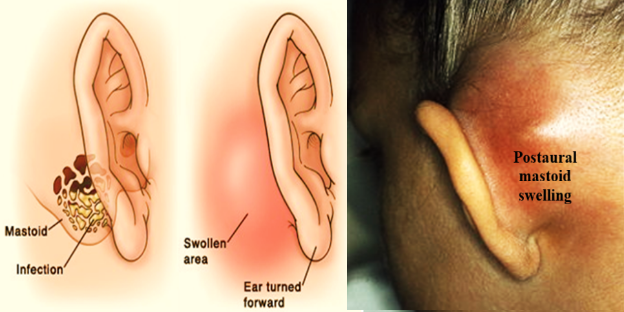
OTOTOXICITY
Definition: The tendency of certain therapeutic agents to cause functional impairment and cellular degeneration of the end-organs and neurons of the cochlear and vestibular division of the VIIIth cranial nerve is called Ototoxicity. These drugs are called Ototoxic drugs.

Depending on the type of inner ear damage, ototoxicity is divided into:
- Cochleotoxicity: There is damage to the outer and inner hair cells of the cochlea.
- Vestibulotoxicity: Damage to type I and type II sensory hair cells.
- Tinnitus: Tinnitus is usually due to toxic damage to the cochlea. It is high frequency and continuous.
- Hearing loss: Initially there is high frequency sensorineural type of hearing loss. It may however progress to involve the speech frequencies. Aminoglycosides commonly cause this type of hearing loss.
- Disequilibrium: When the vestibular organs are damaged, there is inability to focus sharply and distant objects appear to jump on head movements.
- Cessation of the treatment by the ototoxic drug.
- Re-assurance for the tinnitus.
- Sound amplification in the form of hearing aid.
- Tinnitus maskers.

Investigations:
- Routine blood counts show polymorphonuclear leukocytosis with raised Erythrocyte sedimentation rate.
- X-ray mastoid lateral oblique view shows clouding of air cells, lysis of bony partitions between air cells, but the sinus plate is seen as a distinct outline. In later stages, a cavity may be seen in the mastoid.
- HRCT temporal bone indicates the extent of the disease, status of the middle ear, mastoid, ear ossicles, and the facial nerve. It also gives idea of any impending complications.
- Ear swab for culture and sensitivity.

Treatment:

- The primary treatment for mastoiditis is administration of intravenous antibiotics.
- In the absence of culture sensitivity, start with amoxicillin or ampicillin.
- Since anaerobic organisms are often present, chloramphenicol or metronidazole is added.
- As culture results comes, treatment can be switched to more specific antibiotics directed at the eradication of the recovered aerobic and anaerobic bacteria.
- If the condition does not quickly improve with antibiotics, surgical procedures need to be performed (while continuing the medication).
Complications of Acute Mastoiditis
- Subperiosteal abscess.
- Labyrinthitis.
- Facial paralysis.
- Petrositis.
- Extradural abscess.
- Subdural abscess.
- Meningitis.
- Brain abscess.
- Lateral sinus thrombophlebitis.
- Otitic hydrocephalous.
- Suppuration of mastoid lymph nodes.
- Furunculosis of meatus.
- Infected sebaceous cyst.
We Are Always Ready to Help You.
Book An Appointment

